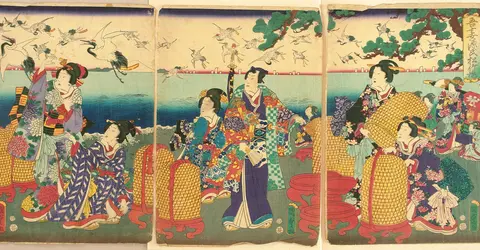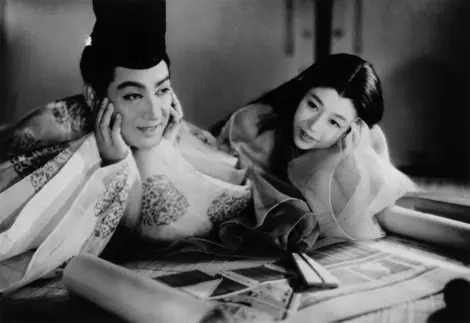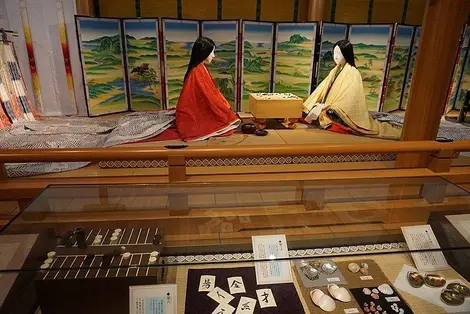Murasaki Shikibu's Genji Monogatari 源氏物語
Love glory and beauty
54 books, 2,000 pages, 300 characters... These are the dizzying figures of Genji Monogatari, a monument to Japanese literature. This literary fresco from the 11th century, intertwining amorous and political intrigues, is the work of a lady-in-waiting at the imperial court, Murasaki Shikibu (973-1014).

Prince Genji in the plum orchard. Hiroshige and Kunisada print (1853)
https://ukiyo-e.org
The loves of the prince
The Genji Monogatari is the literary masterpiece of the Heian period (794-1185). Composed of fifty-four books , this novelfleuve highlights a gallant hero with insolent beauty, Prince Hikaru Genji . The first 41 books are thus devoted to his love affairs, his career, his exile and his love for one of the court ladies named Murasaki. The following 13 books relate the life of the characters heirs of Prince Genji, in particular his son Kaoru, born of his union with Lady Murasaki. It is also the name of this lover and heroine that will be used to nickname the author whose birth name is Tō-shikibu. This work belongs to the typically Japanese literary genre of monogatari , which is literally translated as "story of things". . This narrative story which mixes fiction and real anecdotes corresponds to the association of prose and poems.
The lady of the court
In Genji Monogatari, Murasaki Shikibu expresses with lyricism and refinement the feelings and psychology of some 300 characters. The woman of letters, a keen observer of society and the mores of the Japanese elite of the 11th century, depicts in great detail daily life at the imperial court. Born around 973, she is the daughter of the Minister of Rites and Ceremonies. After the death of her husband, this aristocrat entered the court as a lady-in -waiting to Empress Fujiwara no Shoshi and then devoted a large part of her time to writing. After the Genji Monogatari, she got down to writing her diary and a collection of poems.

Prince Genji under the flight of cranes. Print by Kunisada (1864)
https://ukiyo-e.org
A unanimous recognition
From the 11th century, his writings enjoyed exceptional reception and circulation . They are read at the imperial court and circulated from hand to hand. The original manuscript having disappeared, the oldest known edition is an emaki (painted scroll) from the 12th century. The first manuscript divided into books was born in the following century. At the beginning of the Edo period, the Genji Monogatari took on a new dimension by becoming one of the most important iconographic sources of Japanese art. The genji-e thus designate the prints, the emaki , the fans, the weavings, the kakemonos and the screens illustrating the romantic fresco. This classic also knows many adaptations : in cinema, in manga, in anime and even in opera! In 1998, the city of Uji opened a dedicated museum , presenting the universe of the work through dioramas, documents, furniture and costumes. Recognized internationally, the Genji Monogatari is translated into many languages and attracts praise from all sides. Marguerite Yourcenar, to qualify the genius of Murasaki Shikibu, gives him the nickname of "Marcel Proust of the Japanese Middle Ages". In addition, in 1937 she published a short story, "The Last Love of Prince Genji", in which she imagined a story taking place between books 16 and 17. A literary saga that has crossed centuries and borders!

















